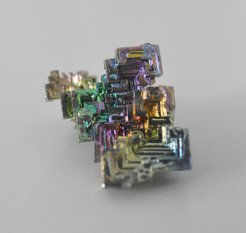A very unique arrangement of bismuth atoms
MPI für Kohlenforschung team publishes fascinating findings in the journal “Nature Chemistry”
The research group led by Dr. Josep Cornellà at the MPI für Kohlenforschung has been studying the special properties of the element bismuth for years. Together with other colleagues, the chemists have now published exciting new findings in the journal “Nature Chemistry”.

A team of researchers at the Max-Planck-Institut für Kohlenforschung has made a significant breakthrough in chemistry by synthesizing a novel bismuth compound that mimics a well-known carbon structure, the π-allyl cation. This discovery opens new avenues for advancements in chemical synthesis, catalysis and material sciences.
The π-allyl cation is a fundamental concept in organic chemistry, often used to explain how molecules bond and interact. Until now, creating a similar structure with heavier elements like bismuth was a challenge. However, the research team successfully developed a compound featuring three interconnected bismuth atoms, allowing electrons to flow freely between them. This unique arrangement makes the compound stable and the heaviest of its kind.
"This discovery is a major step forward in our understanding of chemical bonding with heavy elements," says Josep Cornellà, author of the paper and Max Planck group leader at the MPI. "Our new bismuth compound not only mimics the behavior of lighter carbon structures but also offers potential for creating new materials and catalysts."
The implications of this research are vast, as the newly synthesized bismuth compound can serve as a building block for other innovative bismuth compounds. These could have applications in various fields, spanning from electronics to pharmaceuticals.
The study, published in Nature Chemistry, highlights the potential of using heavy elements like bismuth in ways previously thought impossible. This breakthrough paves the way for further exploration and development of new chemical processes.












